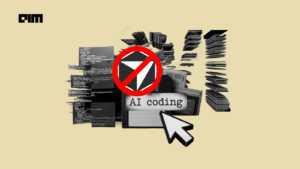In pharmaceutical boardrooms and biotech basements alike, decisions worth millions are often made on incomplete data. For Samy Danesh, this was a lived issue. At Flatiron Health, where he led the cancer data startup’s first analytics services pilot, he watched biopharma teams grind through mountains of clinical literature and internal spreadsheets just to answer basic strategic questions. The work was manual and timelines were tightening.
That observation led to Argon AI, a New York-based startup that’s building what Danesh calls an “AI-native workspace” for life sciences. The company just raised $5.5 million in seed funding led by Crosslink Capital and Wireframe Ventures, with participation from Y Combinator, Pioneer Fund, and experienced operators from both pharma and AI. Their goal is to change how drugmakers interact with data, and ultimately, how fast they can bring therapies to market.
“Every commercial or clinical strategy decision is built on top of fragmented, outdated, or hard-to-access information,” Danesh said. “We’re building Argon to make knowledge as accessible and actionable as your inbox.”
Addressing Complexity in Biopharma
Argon’s pitch is based in the accelerating complexity of biopharma. The number of clinical trials has grown by 70% in recent years. Medical literature is up 58%. Internal datasets are doubling every two years. Yet most pharma teams still rely on manual workflows: sifting through PDFs, decks, and SharePoint folders, just to compile foundational views of the market. This wastes time and leaves room for blind spots. Nearly half of pharma executives report making decisions with incomplete or outdated information.
Argon’s platform ingests structured and unstructured data from across a company’s systems (SharePoint, Snowflake, Veeva Vault, and others) and layers on its own continuously updated database of commercial and clinical content. Teams can then query the platform directly or use custom-built AI agents to automate workflows like primary market research, clinical trial benchmarking, and competitive intelligence.
One of the product’s newest features, Matrix, organizes messy, multi-format research inputs into structured grids. In one common use case, Matrix processes transcripts from physician interviews and automatically generates rows and columns aligned to pre-set themes like drug perceptions or barriers to adoption. Instead of populating notes manually in Excel, analysts get an instant, shareable map of KOL insights.
“You’re talking about hundreds of hours of manual labor done in minutes,” said Randy Guzman, COO of life sciences consultancy Basis Health, which uses Argon across its operations. “This must have been how people felt when the first calculator was invented.”
Domain Specific Training Sets
The product’s generative capabilities invite comparisons to ChatGPT-style tools, but Argon is quick to highlight its safeguards. Unlike open-ended AI systems, Argon’s outputs are grounded in what Jia calls “golden datasets” and domain-specific validation layers. Every line generated by the platform includes attribution, allowing users to trace insights back to source documents. “No model is ever generating its own text out of its own training set,” Danesh told Axios. “It’s really only looking at documents that we pass into it and data that we give it.”
While generative AI hallucinations remain a risk in the category, Argon’s approach reflects a push toward task-specific, auditable models over general-purpose chatbots. The opportunity is substantial: shaving even a month off the drug development cycle can save companies millions, with some estimates putting the daily cost of delay at $3 million.
Investors say the market is primed for this shift. “The life sciences industry has been ripe for this kind of transformation for over a decade,” said Phil Boyer, Partner at Crosslink Capital. “Argon’s deep understanding of pharmaceutical intelligence positions them to lead it.”
Argon’s early momentum suggests it is more than a speculative bet. The team plans to use its new funding to expand hiring across engineering and pharma roles, deepen product capabilities, and scale enterprise deployments. Their customer roster already spans large pharmaceutical firms, nimble biotech startups, and major consultancies.
For Danesh, it’s also about making researchers’ lives easier. “We believe AI will fundamentally reshape how biopharma companies and life science consultancies operate,” he said. “We’re building for a world where researchers aren’t stuck cleaning data but can actually spend their time thinking.”











